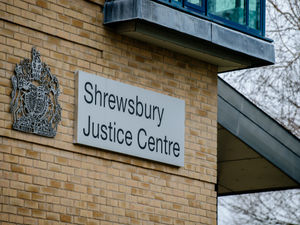Asbestos clean-up 'a week after fire'
A clean-up operation to remove debris containing asbestos did not begin for a week after a massive fire showered ashes on parts of Telford, an inquest heard A clean-up operation to remove debris containing asbestos did not begin for a week after a massive fire showered ashes on parts of Telford, an inquest heard Telford mother-of-three Ellen Paddock, 31, of Blakemore, Brookside, who died in July last year from an asbestos-related cancer, was seven years old in June 1983 when she played in the ashes and caught them in her mouth, believing they were snow, the inquest was told. The inquest has been told the 31-year-old, of Blakemore, Brookside, could also have been exposed to asbestos through her father, who came into contact with the substance working at engineering firm Rubery Owen in Wrexham. Today, on the second day of an inquest in Shrewsbury, environmental health officer John Sweetland said independent tests on debris samples from the blaze at the ordnance depot building in Donnington were carried out, and by Tuesday - four days after the fire - preliminary results showed the samples contained white and the stronger brown form of asbestos. Mr Sweetland said an emergency clean-up plan was formed the following day. Read the full story in today's Shropshire Star
 A clean-up operation to remove debris containing asbestos did not begin for a week after a massive fire showered ashes on parts of Telford, an inquest heard
A clean-up operation to remove debris containing asbestos did not begin for a week after a massive fire showered ashes on parts of Telford, an inquest heard
Telford mother-of-three Ellen Paddock, who died in July last year from an asbestos-related cancer, was seven years old when she played in the ashes and caught them in her mouth, believing they were snow, the inquest was told.
Before her death, she began legal proceedings against the Ministry of Defence, whose ordnance depot building in Donnington went up in flames on June 24, 1983.
The inquest has been told the 31-year-old, of Blakemore, Brookside, could also have been exposed to asbestos through her father, who came into contact with the substance working at engineering firm Rubery Owen in Wrexham.
Today, on the second day of an inquest in Shrewsbury, the jury heard from John Sweetland, an environmental health officer at the then Wrekin Council, now Telford & Wrekin Council.
He said on the day of the fire, a Friday, officers were told by the Army there was no asbestos involved.
Mr Sweetland said on the Monday he spoke to the Property Services Agency, which looked after the MoD building. "The officer advised the building did not contain asbestos nor was it listed on the asbestos register." he said.
However a call later that day to the manufacturer of the building's roof revealed it contained white asbestos.
Independent tests on debris samples were carried out, and by Tuesday - four days after the fire - preliminary results showed the samples contained white and the stronger brown form of asbestos.
Mr Sweetland said an em ergency clean-up plan was formed the following day.
"A crew of 60 people worked through the night on June 29 to wash 60 miles of roads and pavements," he said. "On June 30, the removal of debris began. By July 2, the majority of debris had been cleared."
Peter O'Keefe, a civil servant for the MoD, said a Board of Inquiry investigated the fire. He said the board found asbestos in br- ake linings stored inside the plant. He said it was more likely the asbestos came from these, than the roof.
Mr O'Keefe said lessons had been learned from the fire. A system was now in place that mapped MoD buildings containing asb- estos and could be accessed "instantaneously."
The hearing continues.
By Lizzie Yates



